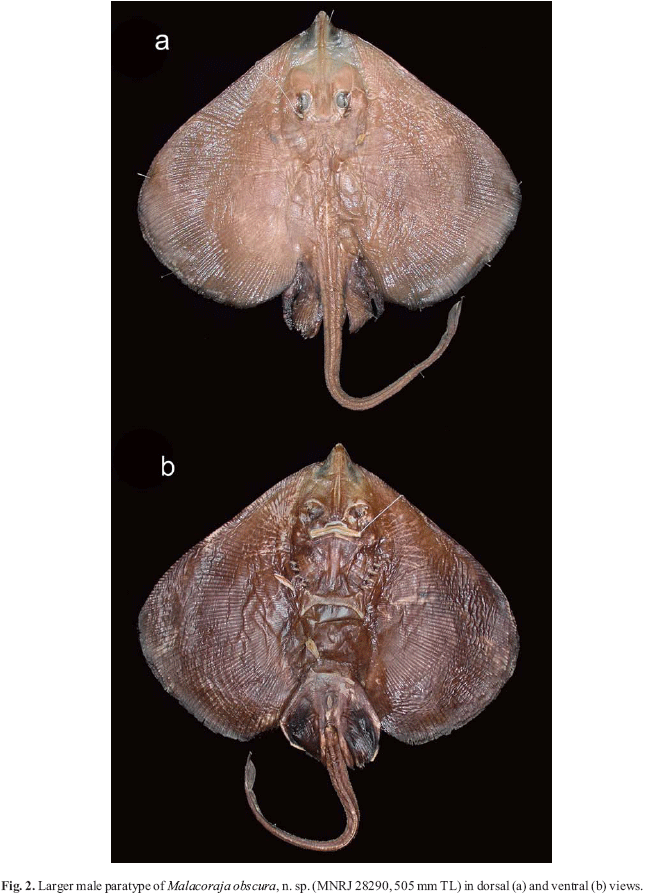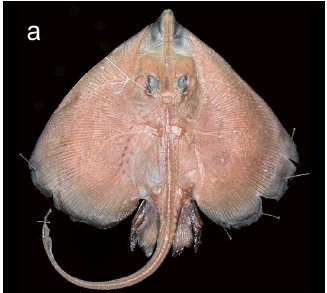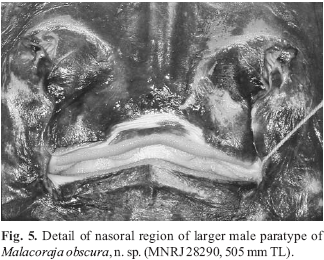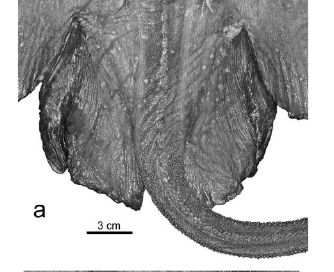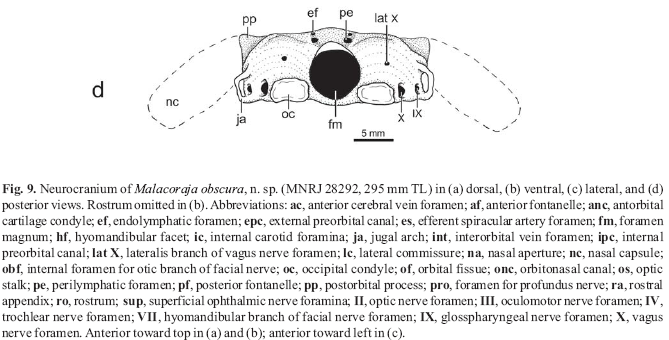The first report of a western South Atlantic soft skate, genus Malacoraja Stehmann, 1970, is described as Malacoraja obscura, new species, from the southeastern Brazilian continental slope off the states of Espírito Santo and Rio de Janeiro, in depths ranging from 808-1105 m. The new species is known from five specimens and is distinguished from congeners by its unique dorsal coloration with small, faded white spots on disc and pelvic fins, by retaining in larger specimens an irregular row of thorns along dorsal midline of tail (extending from tail base to two-thirds of tail length in 680 mm total length female), and by presenting a ventral tail midline devoid of small denticles only at base (naked region not extending posterior to pelvic fin rear margin). Further diagnostic characters in combination include the lack of scapular thorns in larger specimens, elevated number of tooth rows (64/62 tooth rows in subadult male of 505 mm TL, and 76/74 in large female of 680 mm TL) and vertebrae (27-28 Vtr, 68-75 Vprd), ventral disc and tail with a uniform dark brown coloration, paired postventral fenestrae on scapulocoracoid, enlarged posterior postventral fenestra, circular foramen magnum and paired internal carotid foramina on braincase floor. Adult males were unavailable for study, but an anatomical description of M. obscura, n. sp., is provided. Comparisons are made with all known material of M. kreffti, literature accounts of M. senta, and with abundant material of South African M. spinacidermis; M. obscura, n. sp., most closely resembles M. spinacidermis from the eastern South Atlantic in squamation, coloration and size. Malacoraja is monophyletic due to its unique squamation and rostral appendices, and apparently comprises two species-groups, one for M. obscura and M. spinacidermis, and the other for M. kreffti and M. senta, but clarification of species-level relationships must await more anatomical information, particularly of the latter two species.
Rajinae; Gurgesiellini; anatomy; taxonomy; systematics; phylogenetic relationships


